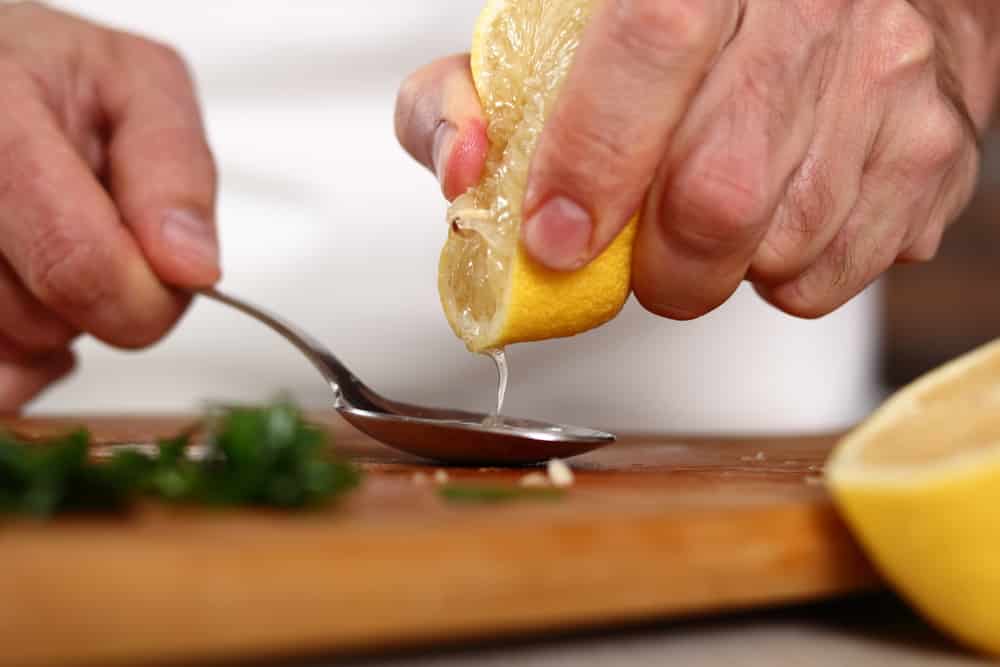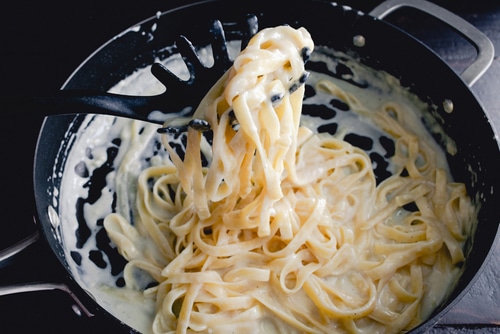
Alfredo sauce is typically used for pasta but there are many other ways to use it such as in pies or even as a topping on meat. That is why, you will need to be particularly careful about preparing it and ensure that you have the perfect taste, aroma and texture.
The Alfredo sauce should have a smooth rich texture which makes it ideal to go with any type of dish. However, at times you might face the issue of having grainy alfredo sauce. There can be a number of reasons why your Alfredo sauce becomes grainy.
If you have prepared the Alfredo sauce and it appears to be grainy for some reason, here is how you can have it sorted out.
What Ingredients Are In Alfredo Sauce?
There are various types of Alfredo sauce recipes and some cooks use alternative ingredients if they don’t have the traditional ones in their kitchens. A professional Alfredo sauce will contain heavy cream, butter and parmesan cheese.
You can also add salt and pepper into the mixture. On the other hand, if you don’t have heavy cream you can also make Alfredo sauce using milk and cornstarch. The cornstarch will thicken the sauce and give it a silky texture and add a bit of sweetness to the sauce.
After the sauce is done, you can add other ingredients to the sauce such as mushrooms and quality blocks of ham. Then pour the sauce over fettuccini pasta.
What Causes Grainy Alfredo Sauce?
Before you can fix your gritty Alfredo sauce, it’s important to understand what caused this mishap in the first place. This can help you prevent your sauce from becoming grainy when you make it for future dishes. With that being said, here are reasons why you have a gritty Alfredo sauce.
- Low Quality Parmesan Cheese
The parmesan cheese you use will greatly impact the texture and taste of your Alfredo sauce. You should avoid using pre-shredded or pre-packaged parmesan cheese.
Consider using high quality chesses such as Grana Padano or Parmigiano Reggiano. These types of cheeses will ensure your sauce has the best flavor and smooth consistency.
- Using a High Heat
The most common mistake when making Alfredo sauce is cooking it on a high heat. Cooking a creamy sauce on a high heat can start to catch at the bottom of your pot causing granulates to form in your sauce.
Cook your sauce on a low to medium heat and keep stirring to ensure a silky texture.
- Incorrect Ratios of Butter and Cream
Using the correct amount of butter and cream in your Alfredo sauce is crucial if you want the right texture. Not using the correct ratios can cause your creamy sauce to turn into a gritty mess.
Some recipes will call for more cream and butter depending on the serving size. Follow the exact quantities on your recipe to prevent your sauce from becoming gritty.
- Not Stirring Frequently
Cream that’s cooking in a pot can quickly become lumpy and burn at the bottom of the pot. That’s why it’s important for you to keep stirring your Alfredo sauce until it’s done cooking. Use a whisk to stir your sauce to prevent lumps.
- Using Flour
Some people use flour in their Alfredo sauce as an emulsifier and to thicken the sauce. However, flour is known to cause lumpiness and gritty textures in creamy sauces. To prevent this from happening consider using cornstarch instead.
Mix one to two table spoons of cornstarch in a quarter cup of cream. Then pour the mixture into your sauce pan while your cream is cooking.
- Using the Incorrect Pot
When cooking your Alfredo sauce, don’t use a pot that tends to burn your food. Using the incorrect cooking pot will burn your sauce and cause grains to form. You want to use a non-stick aluminum sauce pan that doesn’t catch at the bottom.
How to Fix Grainy Alfredo Sauce?
Grainy Alfredo sauce can be unpleasant to eat because it won’t have that smooth rich consistency that you’re looking for. Here are three ways you can fix gritty Alfredo sauce.
- Add a Bit More Cheese
The best way to deal with the problem of a gritty Alfredo sauce is to add a bit more cheese while you still can. Be mindful that you can only add more cheese while the other cheese in your Alfredo sauce is melting, and not if it is cooled down.
So, you will need to ensure that you are reheating it if the sauce has cooled down. On the other hand, if you are still cooking the Alfredo sauce and it appears to have a grainy texture, you will need to get it sorted out by adding more cheese.
Pick the right type of cheese to go inside your white sauce. Mascarpone cheese or cream cheese would be the right choice but parmesan is the traditional cheese to use. Ensure you put in adequate amounts of cheese and that you’re using the right product.
Just mix it well after you have added the cheese and simmer it on low heat. Using this method will help smooth out your sauce and give it more of that rich cheese flavor you’re looking for.
- Squeeze in Some Fresh Lemon Juice
If you are running short on cheese, or you don’t have the time for all the simmering, you will need to use a bit of lemon juice to smooth out the texture. For the Alfredo sauce that is cooled down and has a grainy texture, you can add one tablespoon of lemon juice to one bowl of Alfredo sauce.
The lemon juice will break up any protein molecule buildup in your sauce that’s causing the gritty texture. Make sure that you mix the lemon juice in well and let it sit in the Alfredo sauce for about 5 minutes before pouring over your pasta.
- Butter
If you are not fond of the lemon taste in your Alfredo sauce, and you would like the Alfredo sauce to have a mild, sweet taste and texture, it would be better for you to not use lemon juice. The lemon can give your sauce more of a sour tang to it.
Butter is the perfect choice if you want more of a sweeter taste and less of a tang to your sauce. Additionally, it’s perfect for smoothing out your sauce. So, to get it sorted, you will need to add some butter mixed with the water to your cream mixture.
You will need to add ¼ cup of water with 2 tablespoons of butter for a small bowl of Alfredo sauce. After that, you will need to heat the pan on medium heat and then stir it up until it warms up. That will allow you to have the perfect smooth, rich, creamy Alfredo sauce.
Final Thoughts
A gritty or lumpy Alfredo sauce will be unpleasant to eat. So you want to ensure your sauce is smooth, thick, and creamy.
A thin Alfredo sauce will also be unpleasant to eat and won’t coat your pasta correctly. Following the methods in this post will ensure your sauce comes out perfectly every time you make it.




